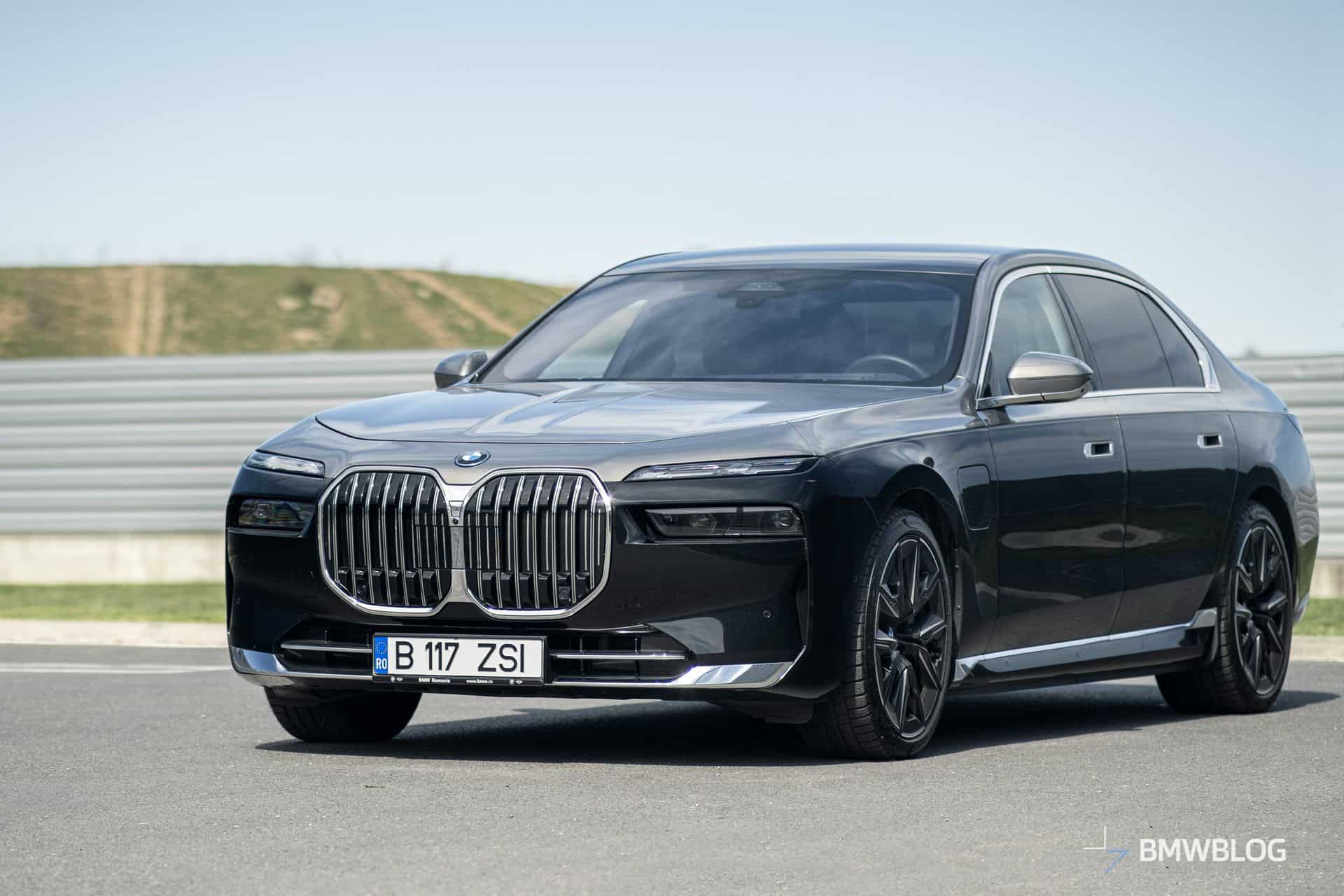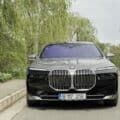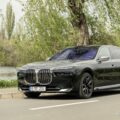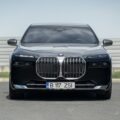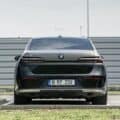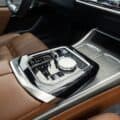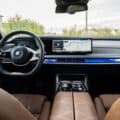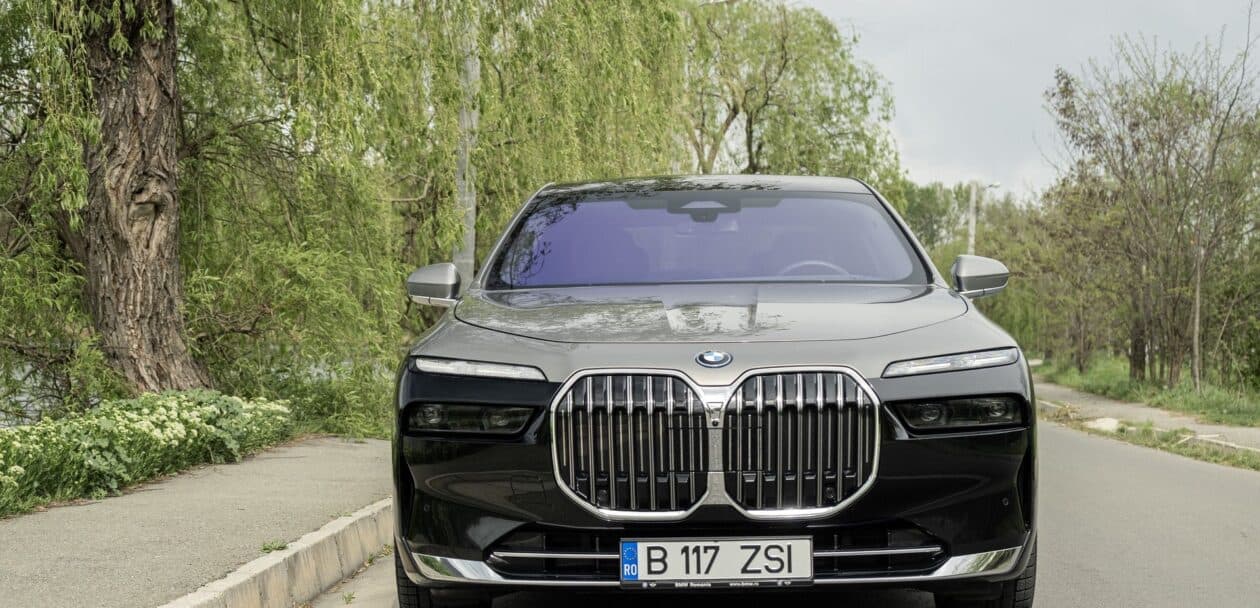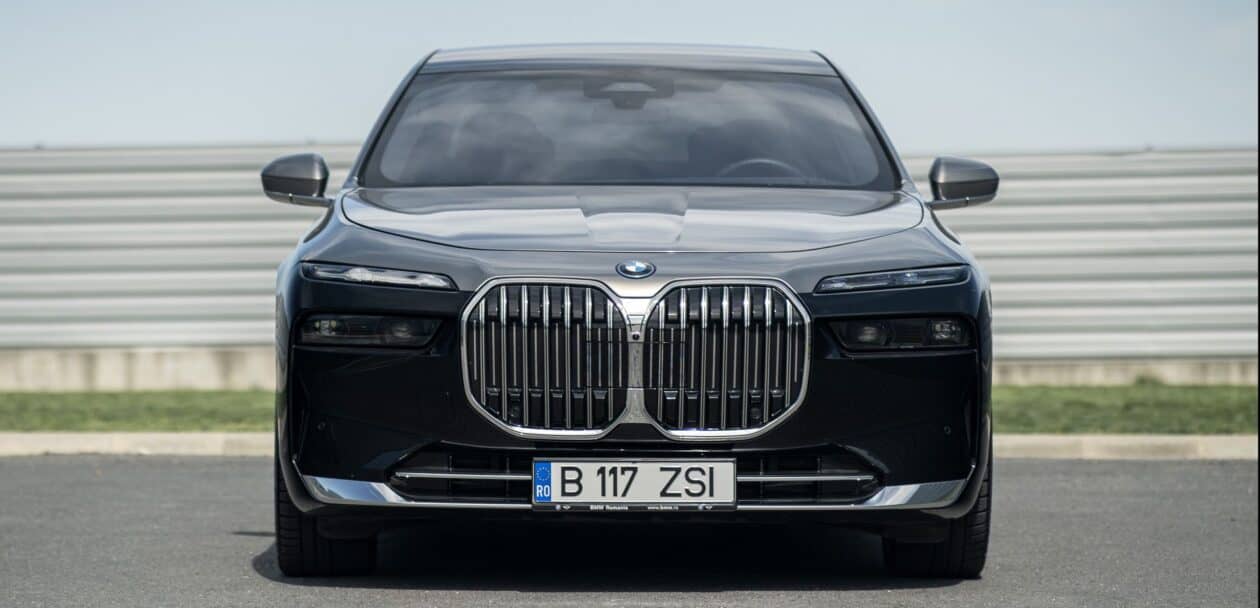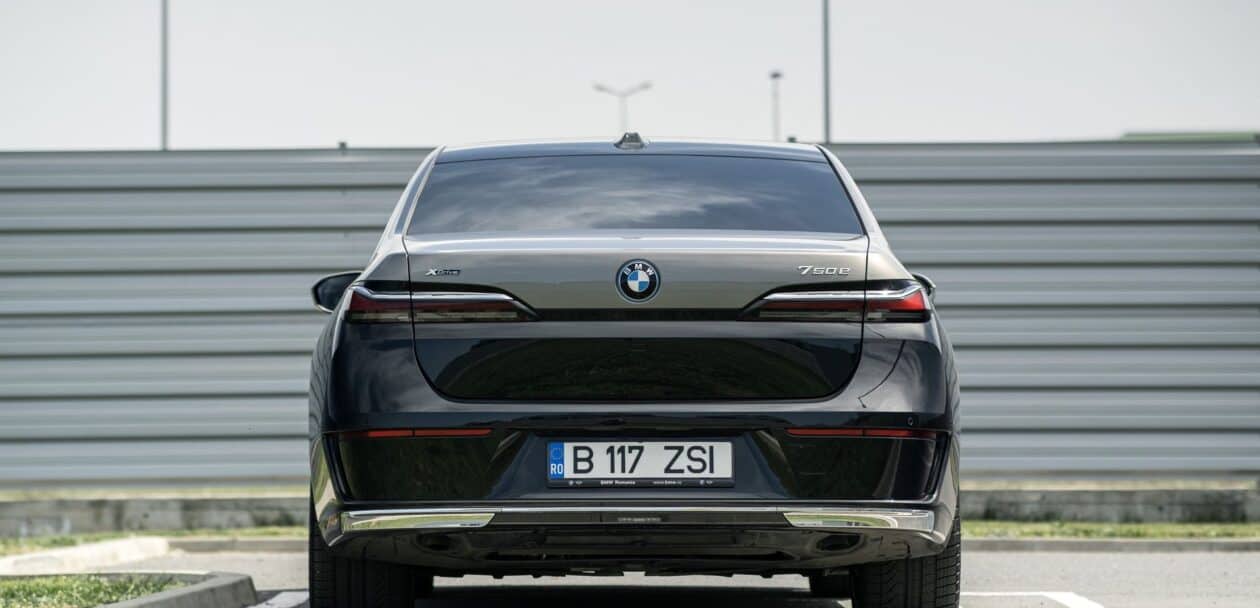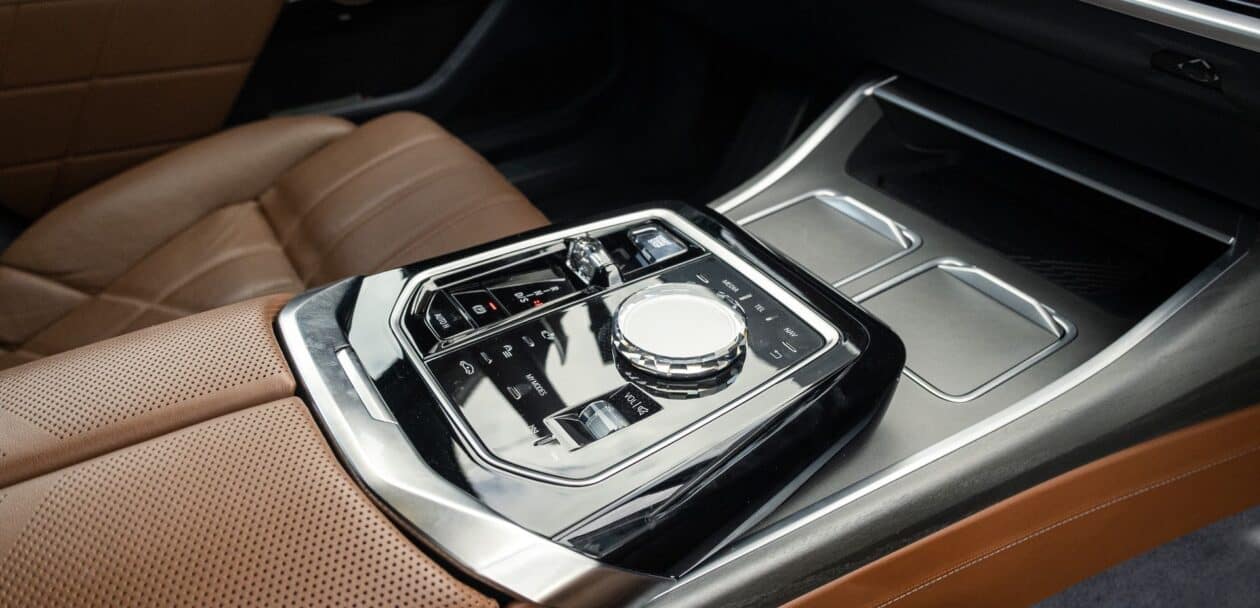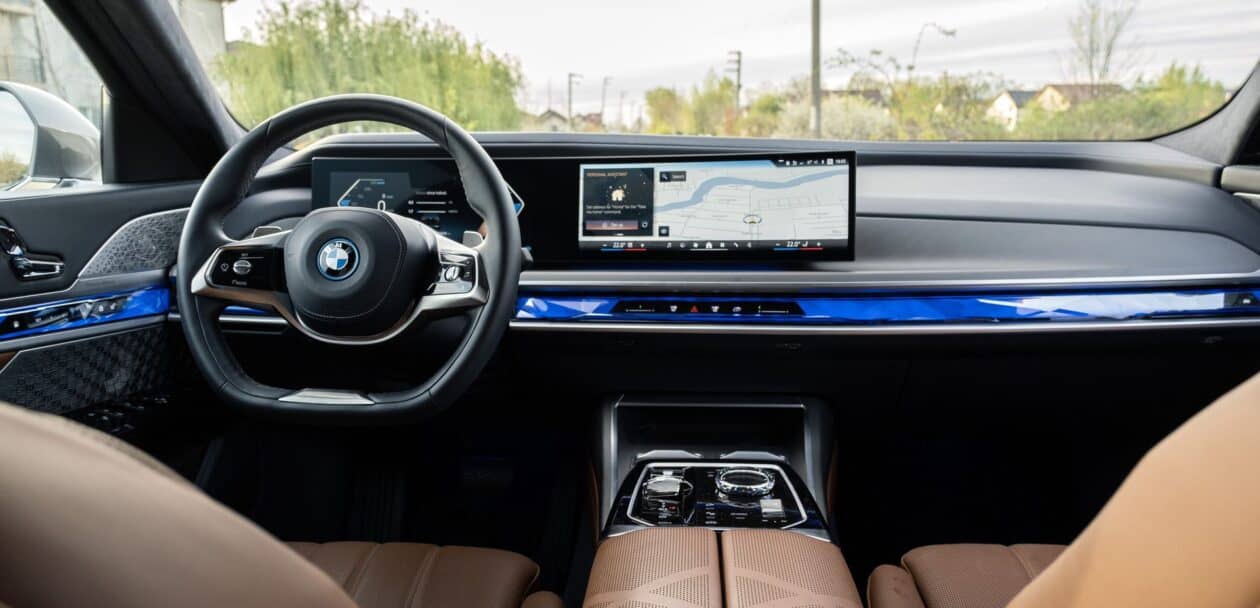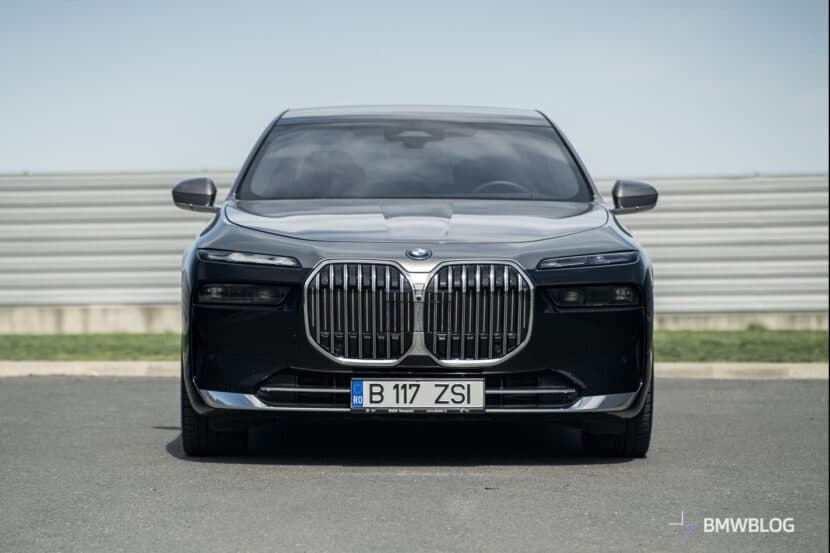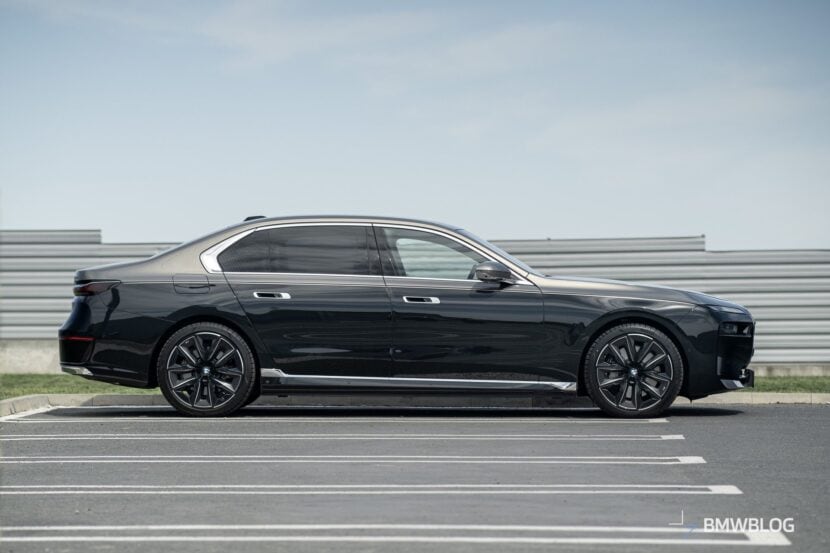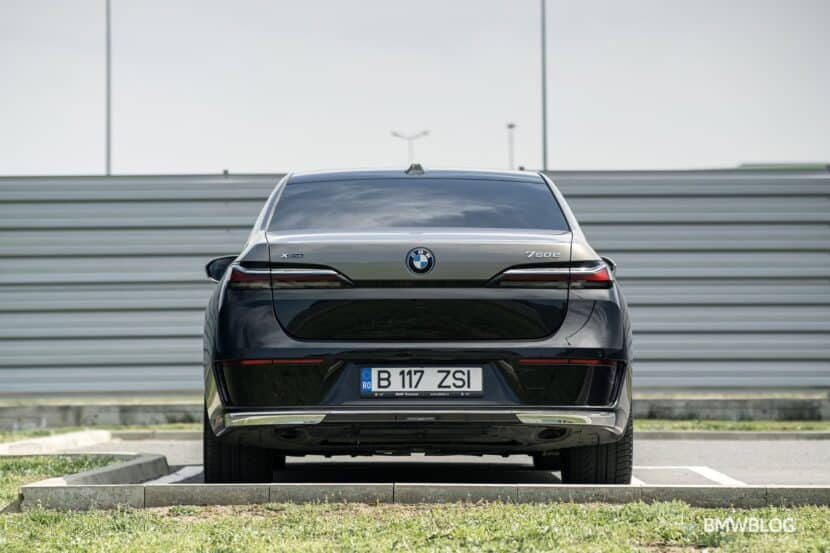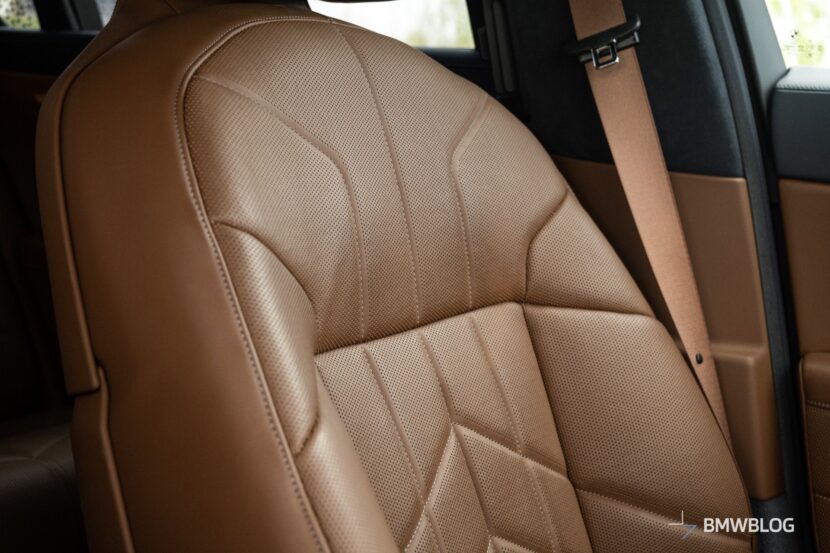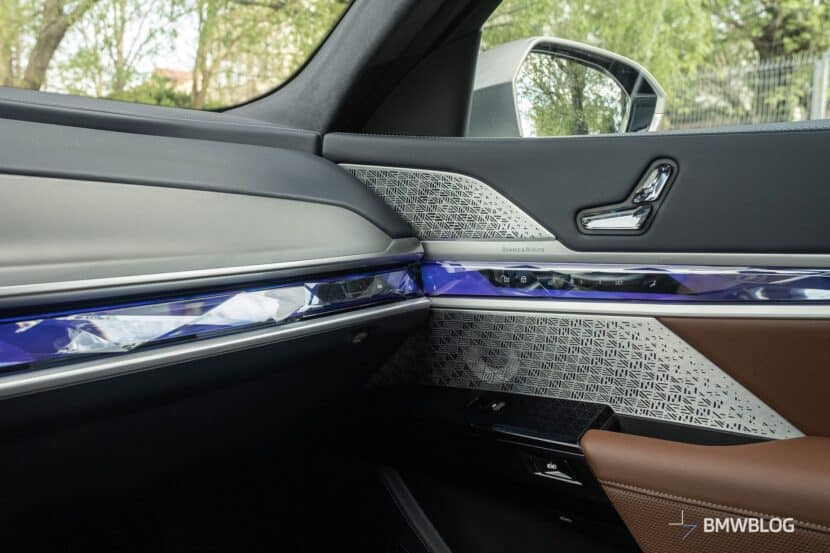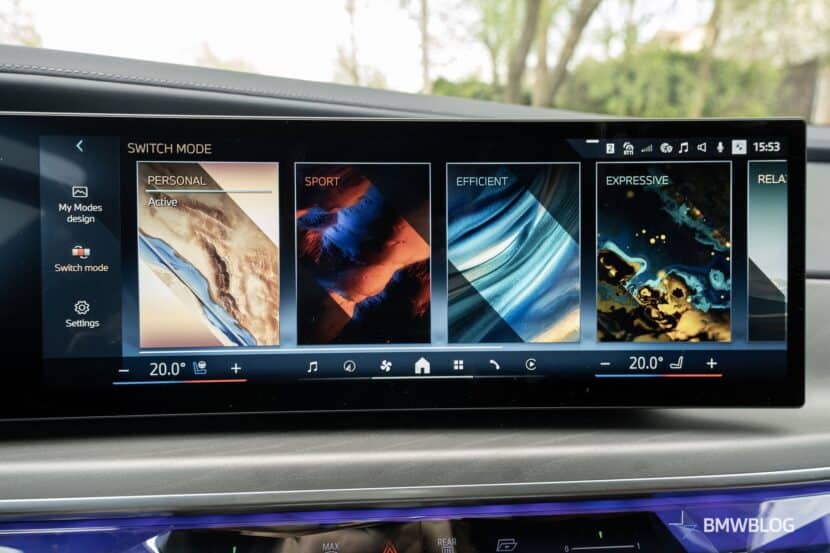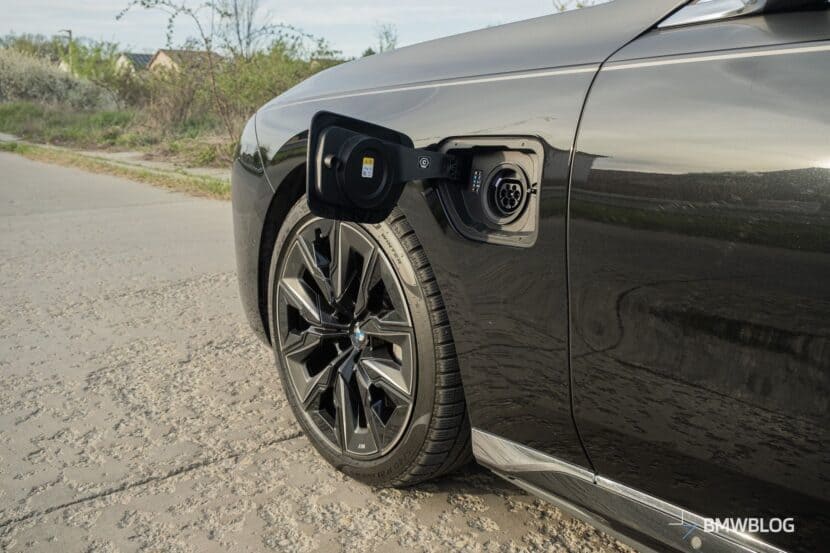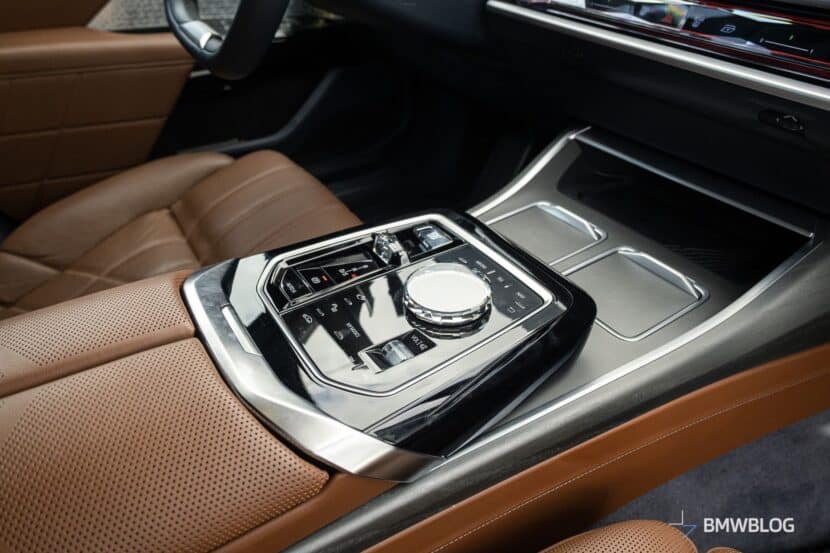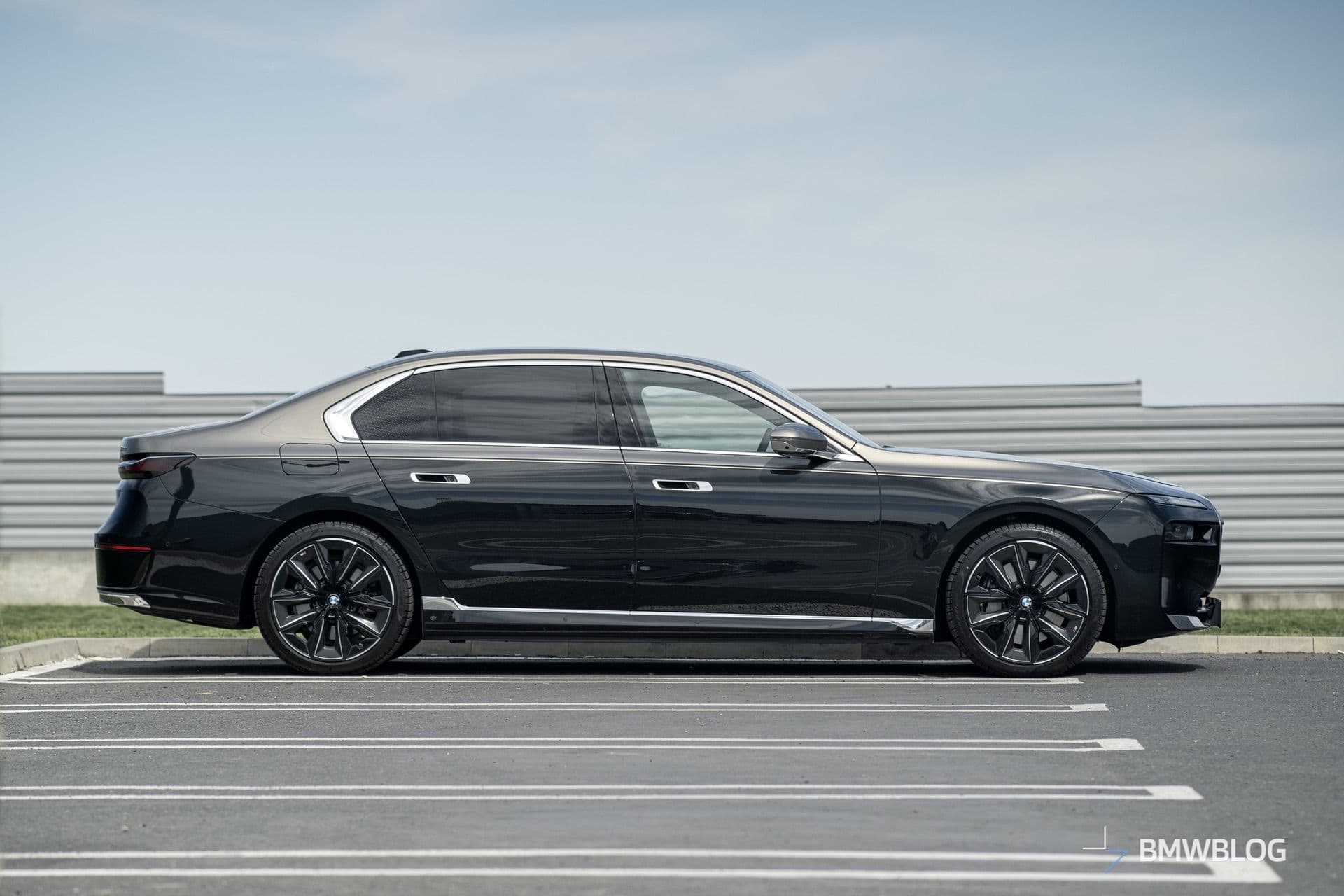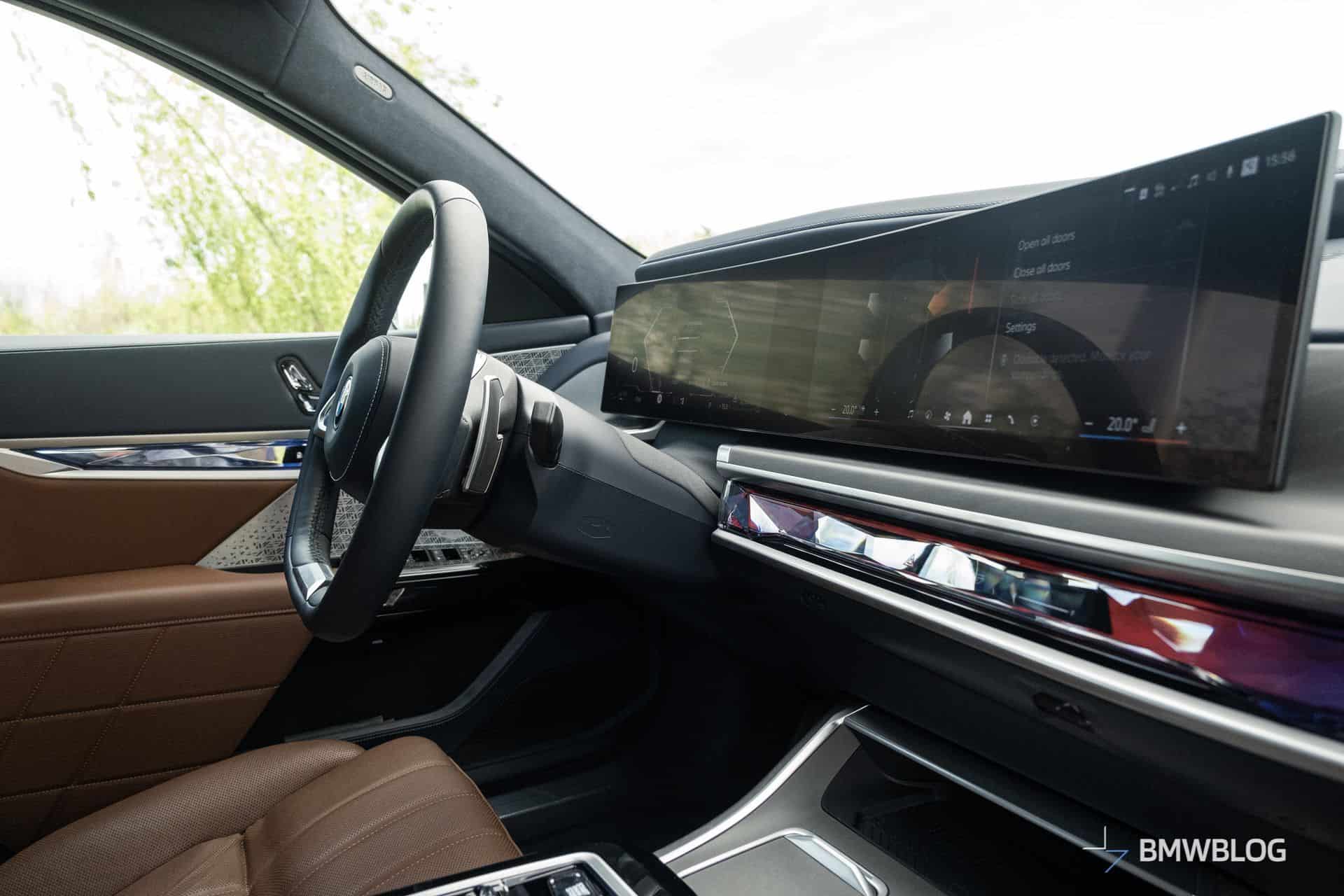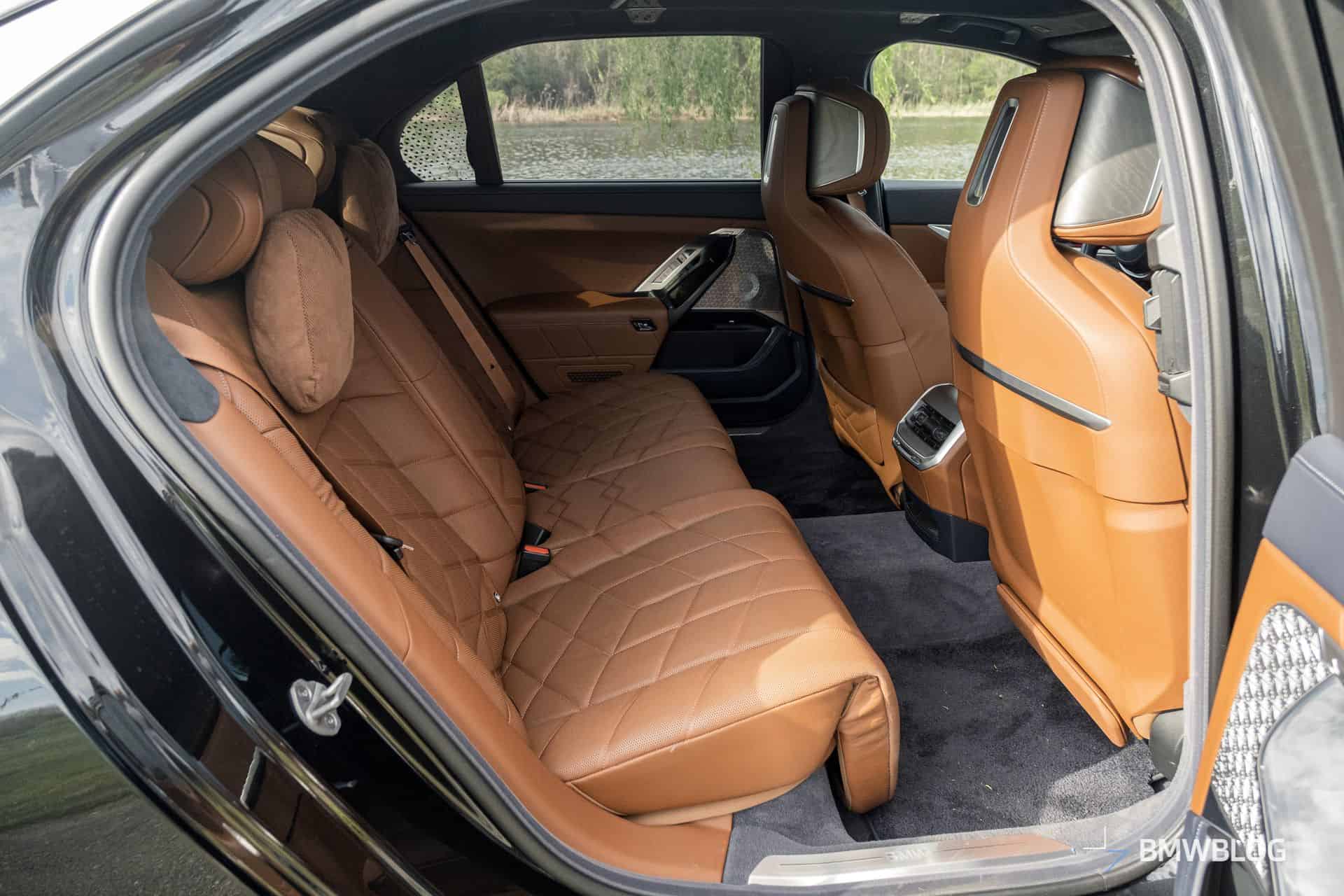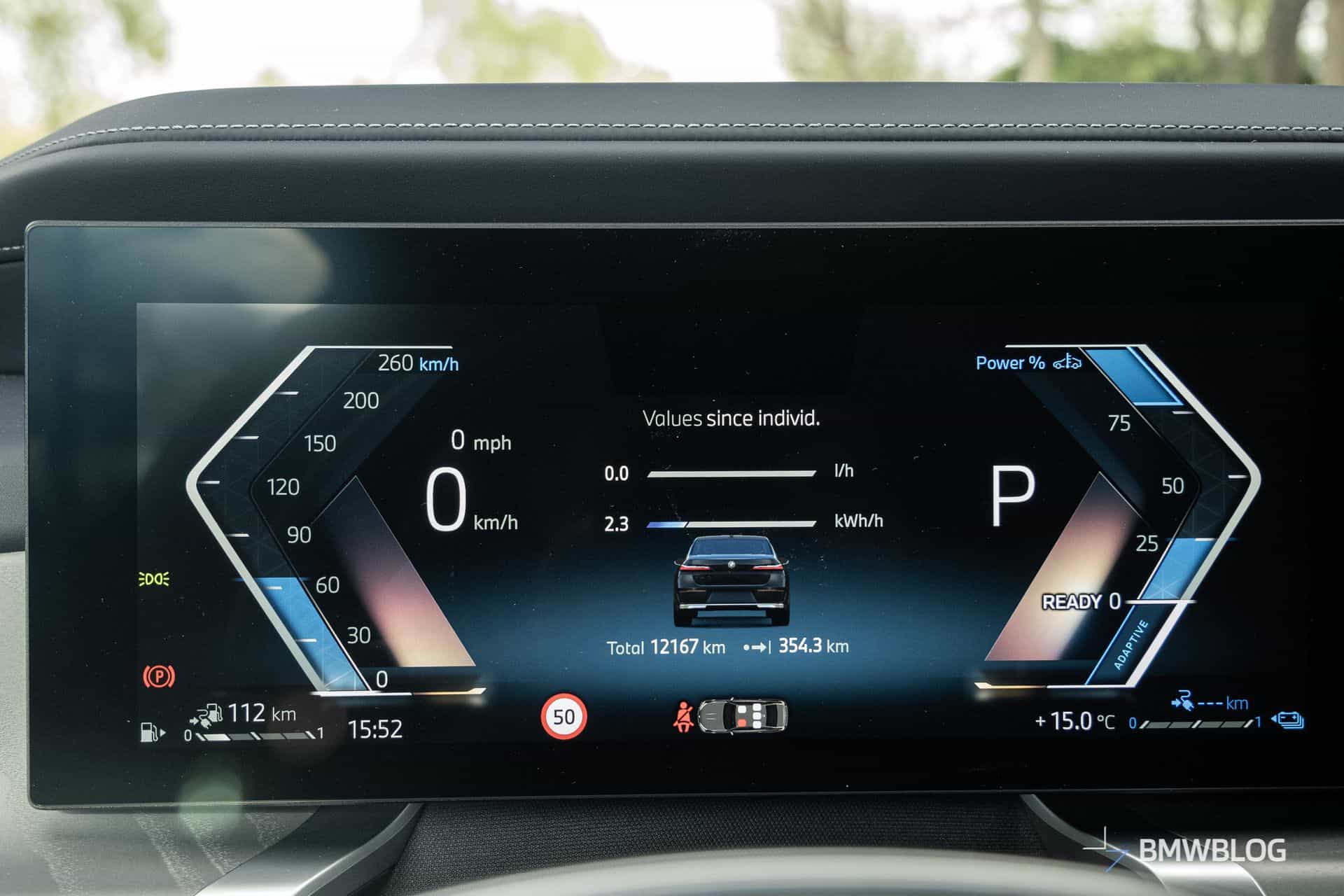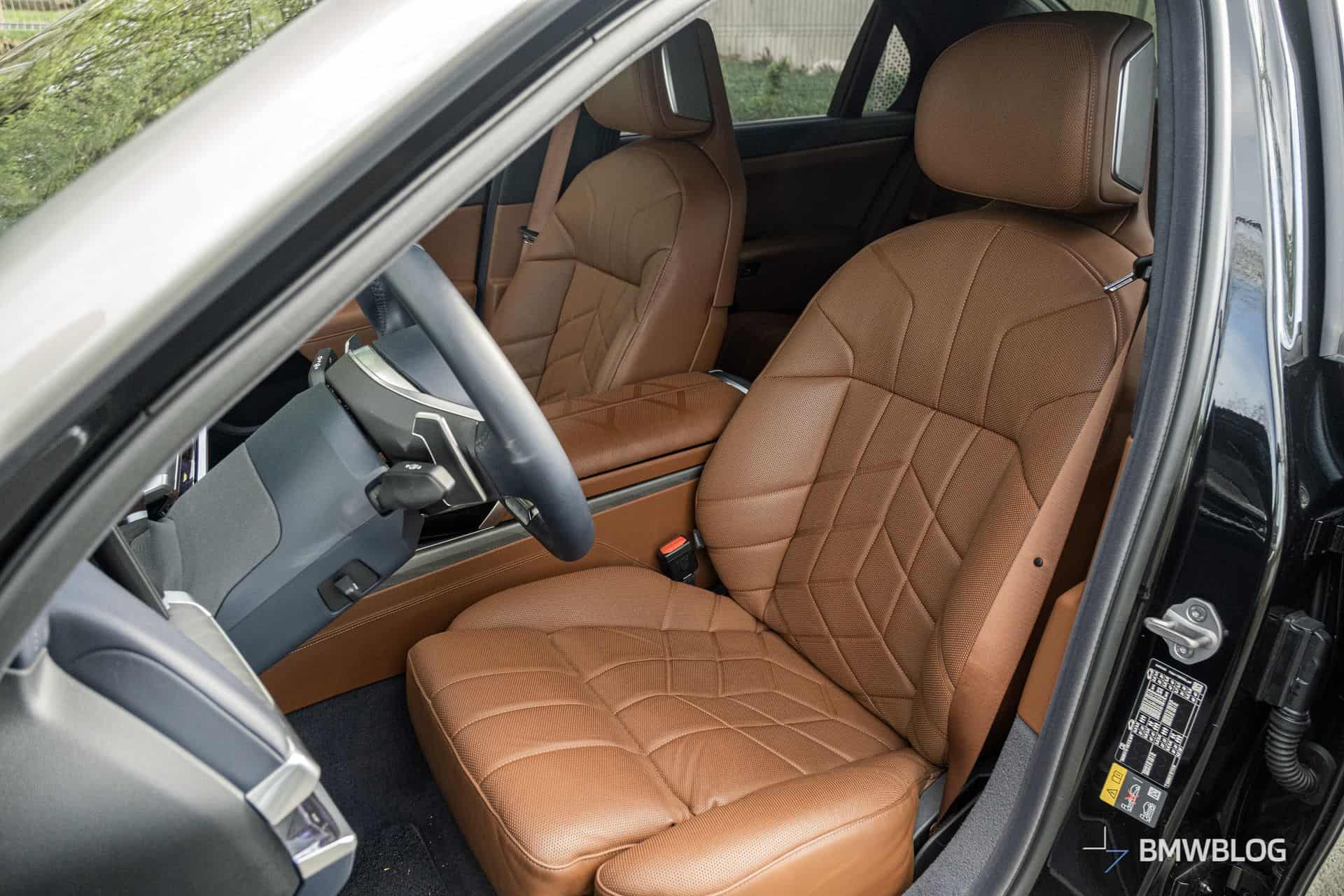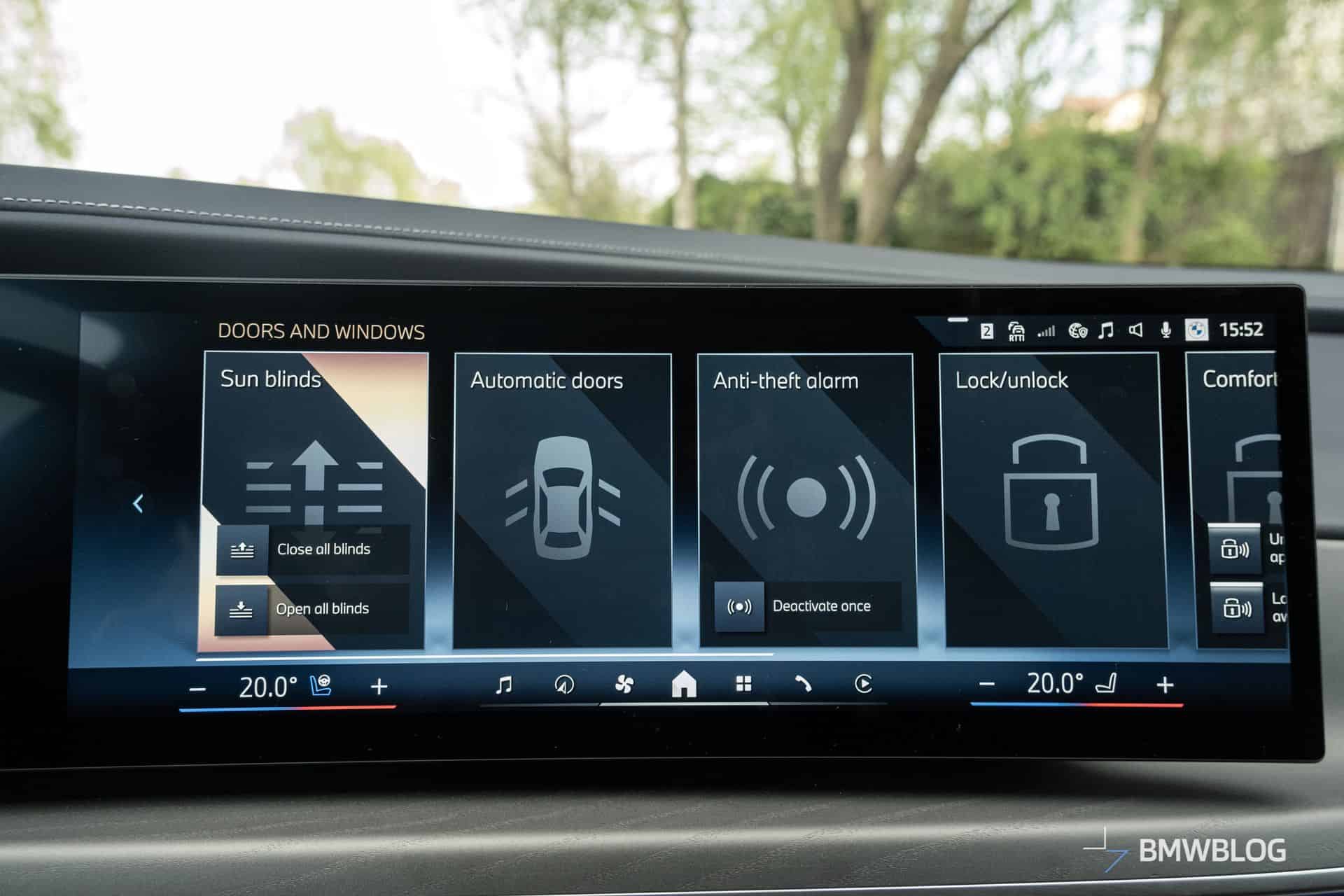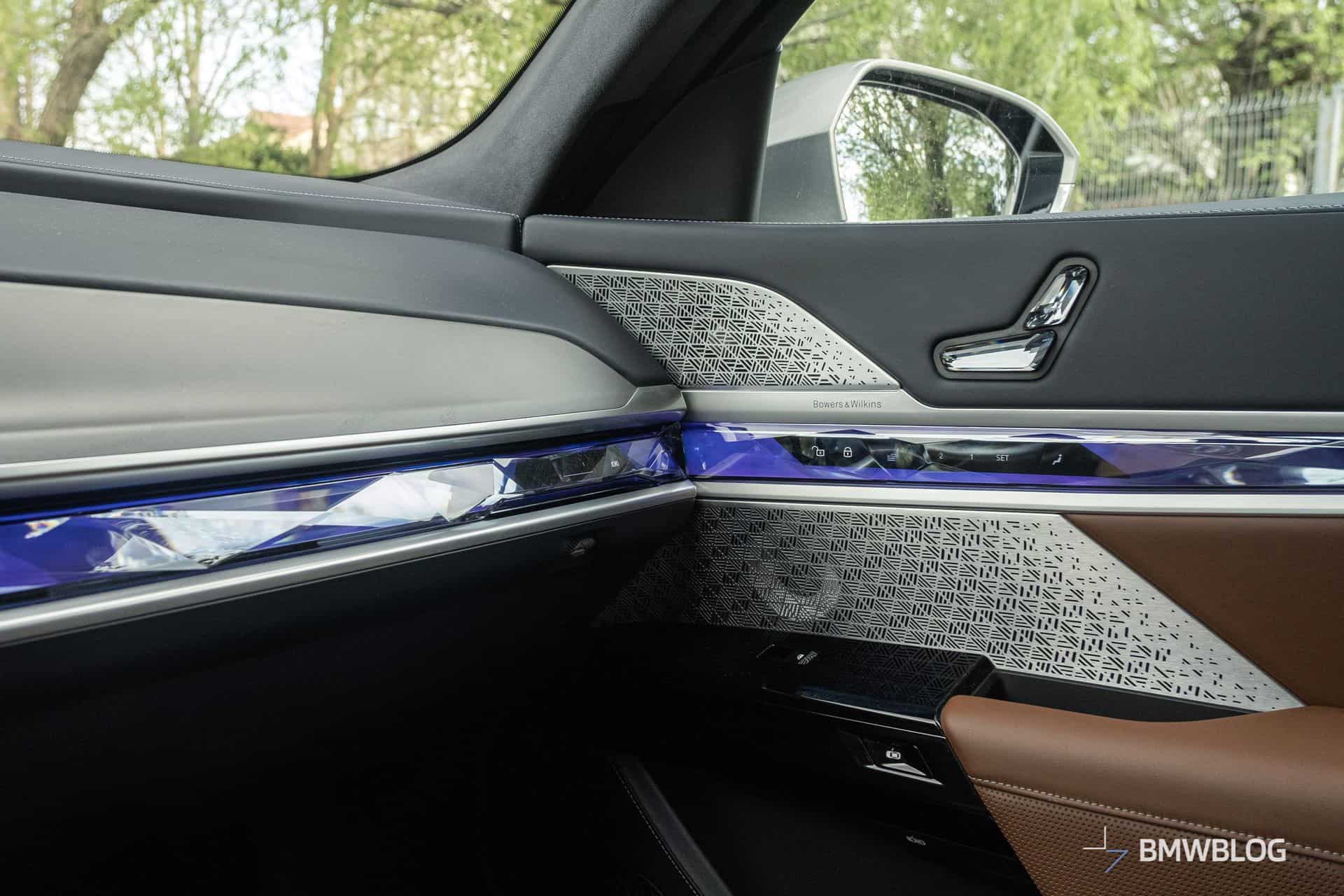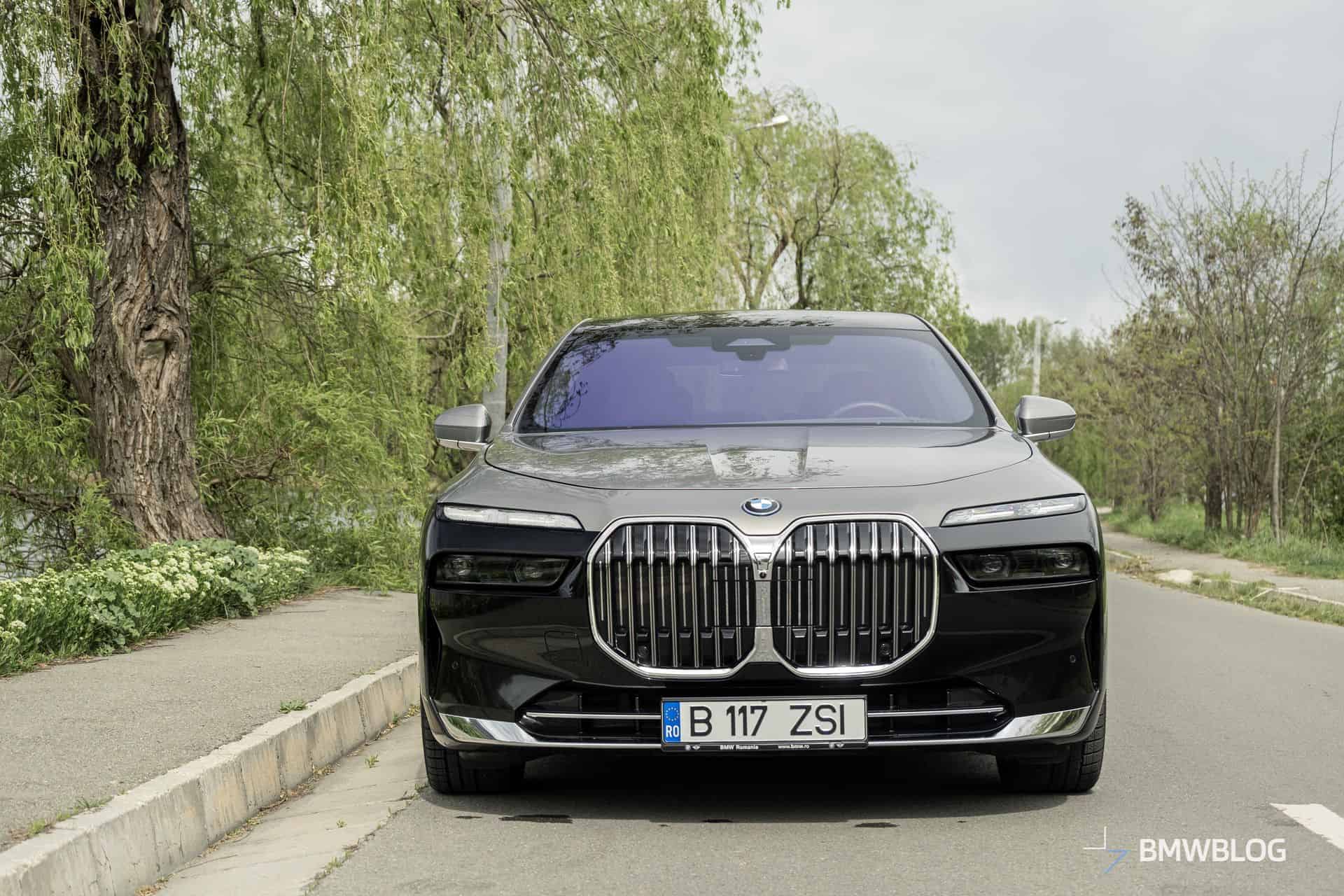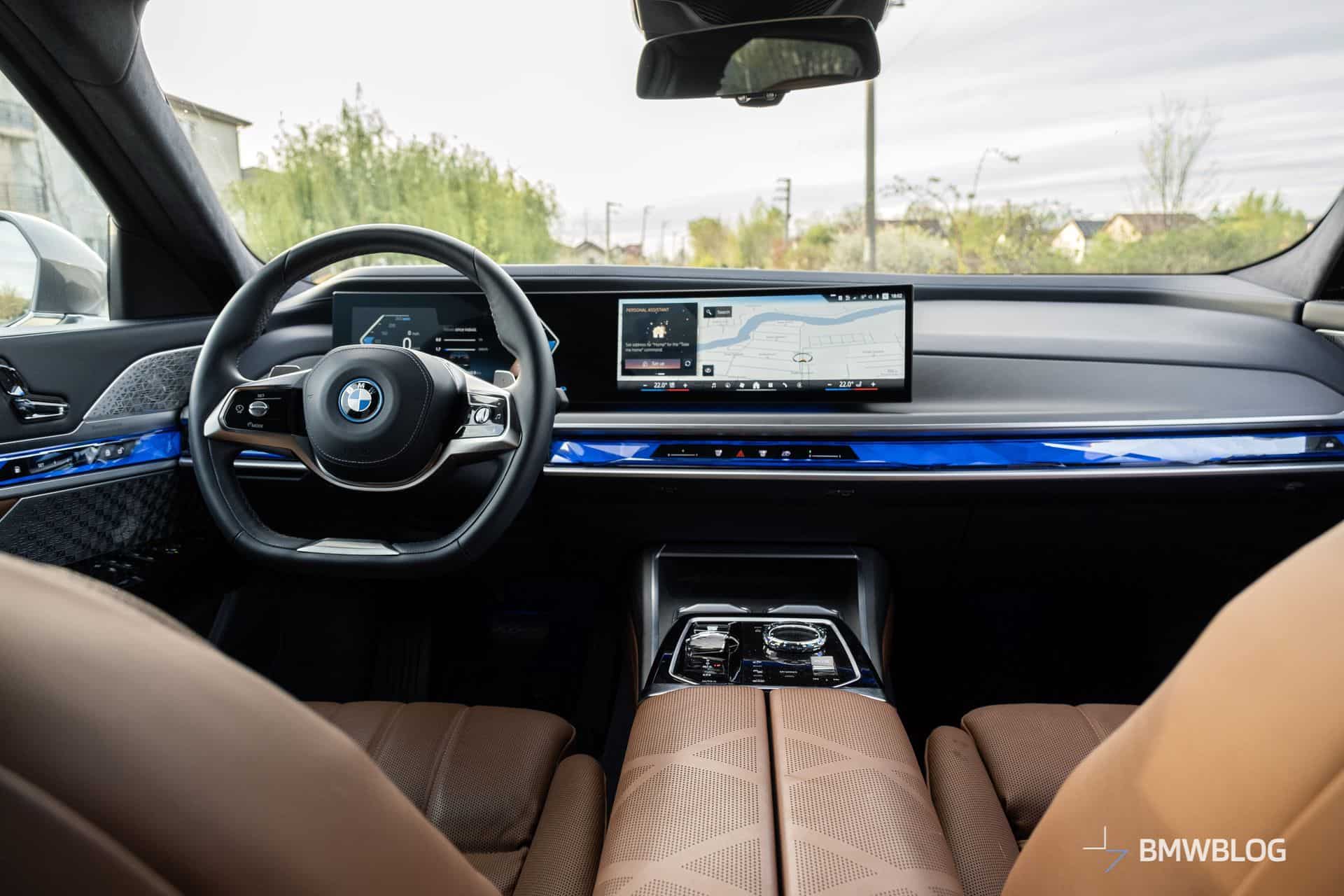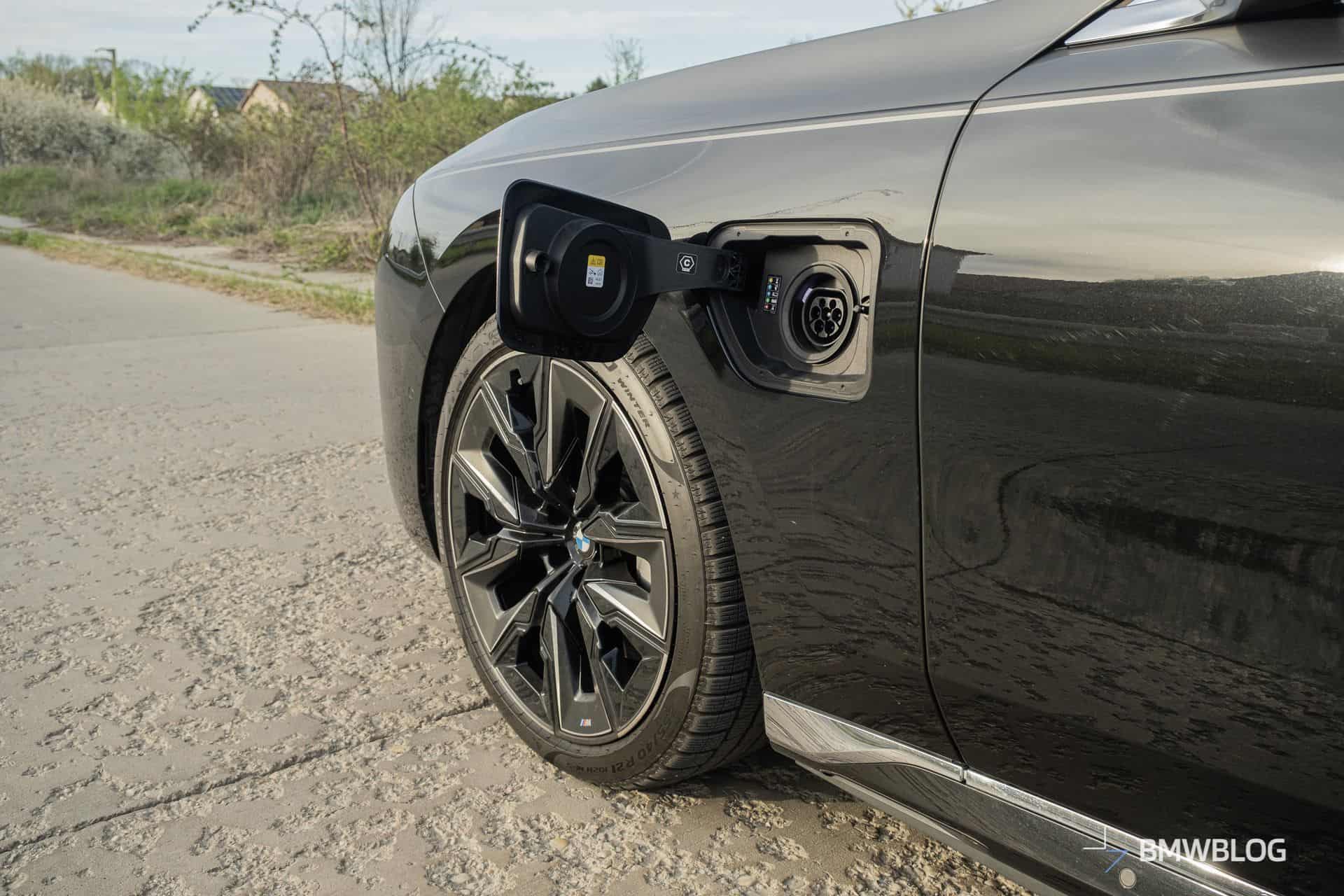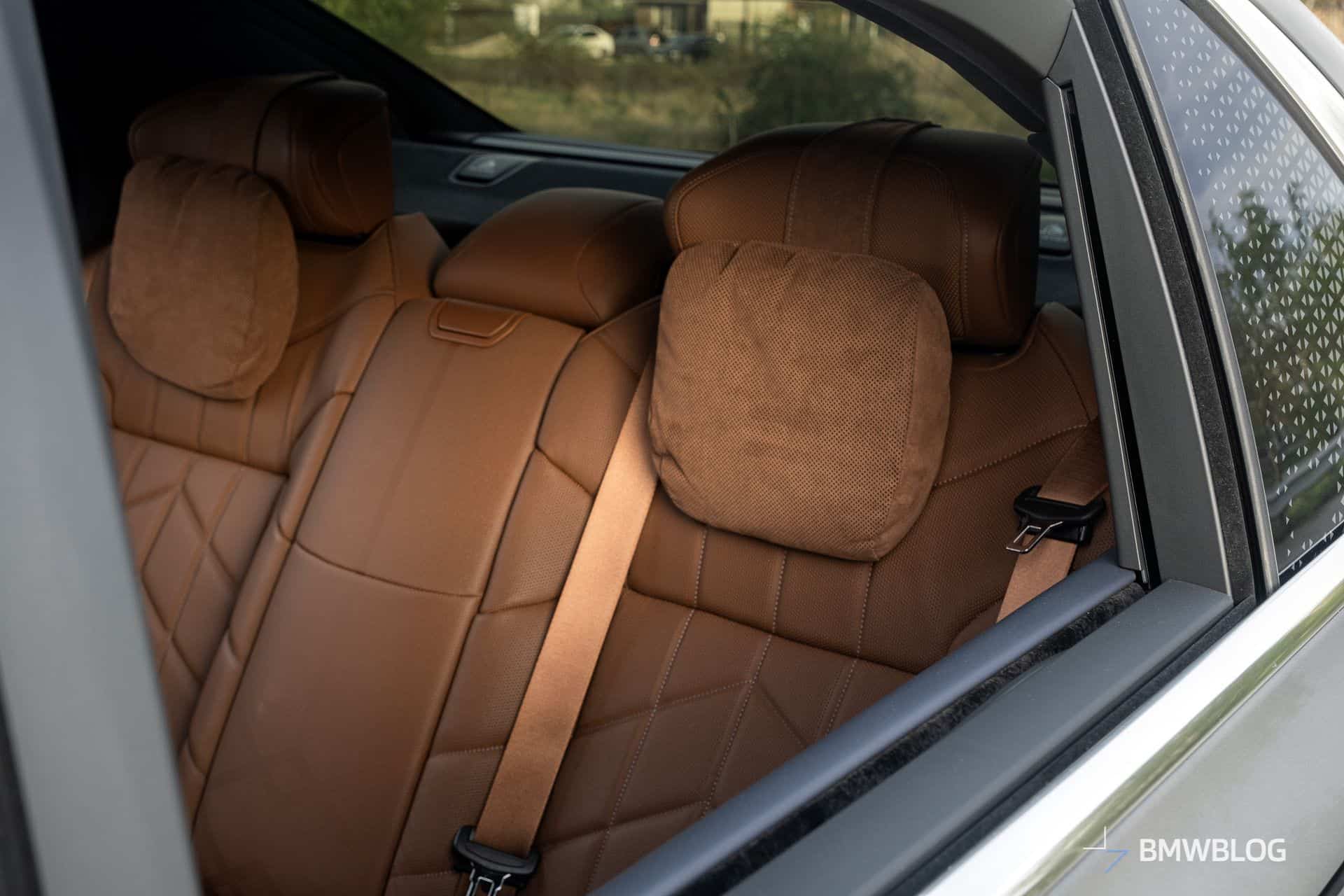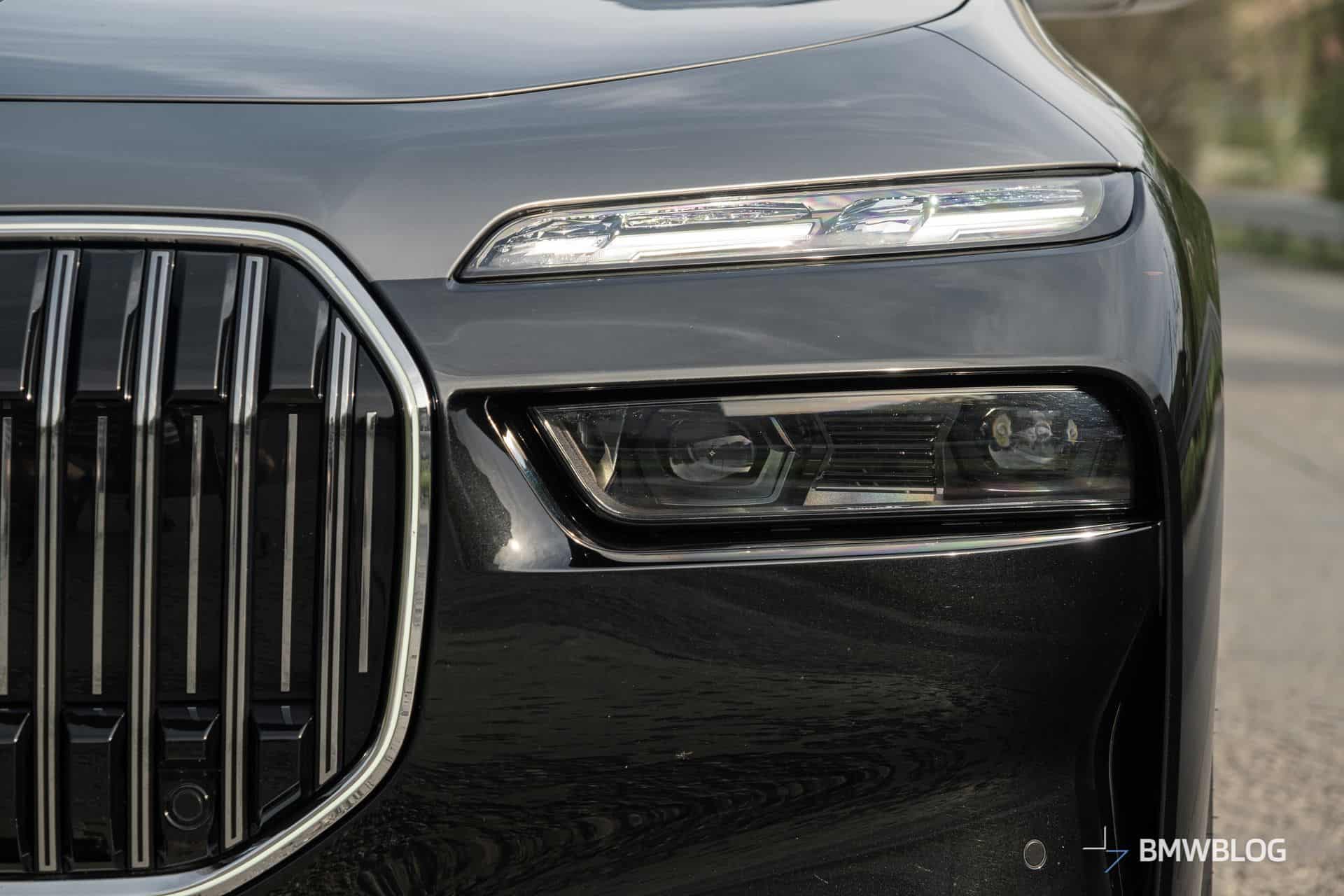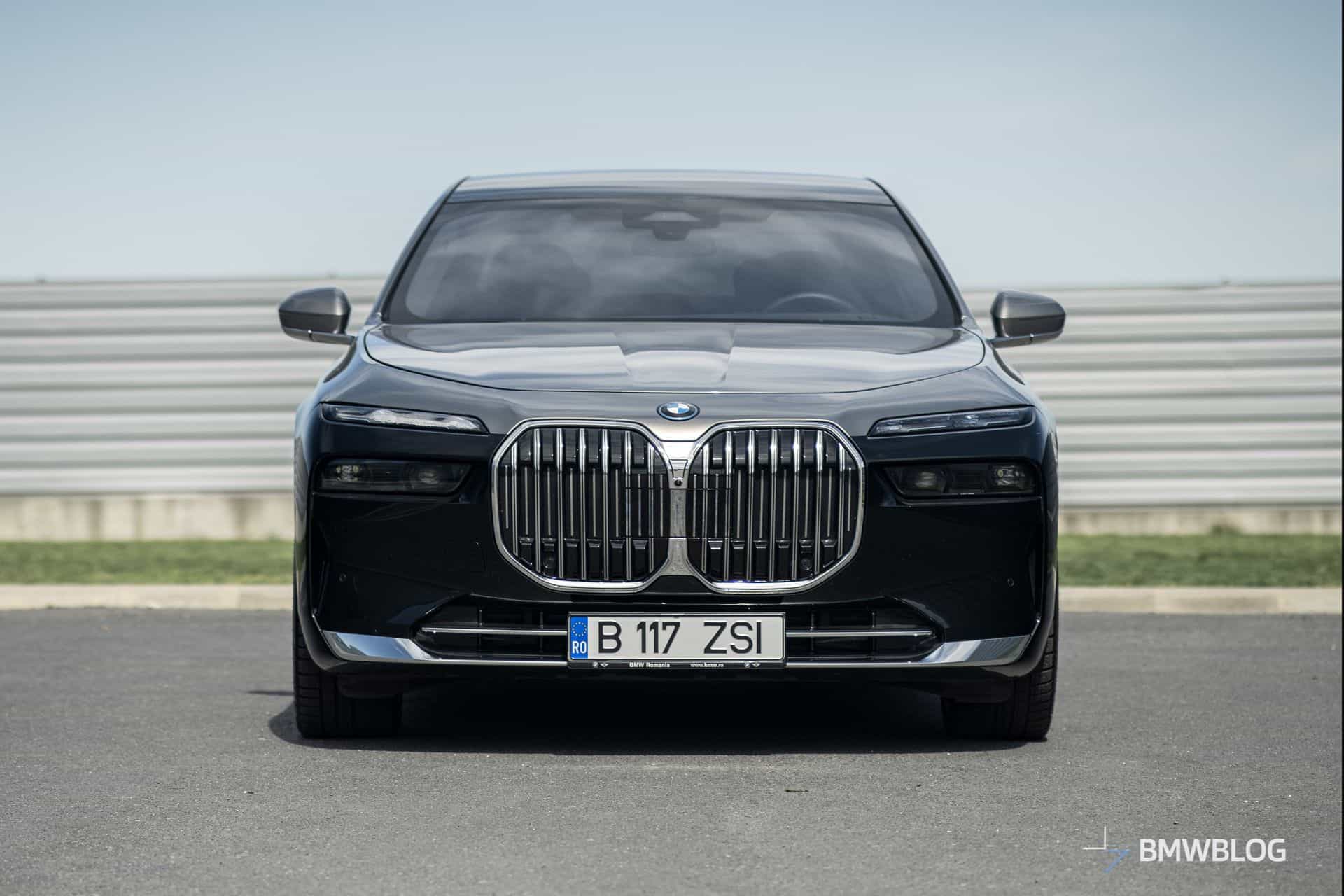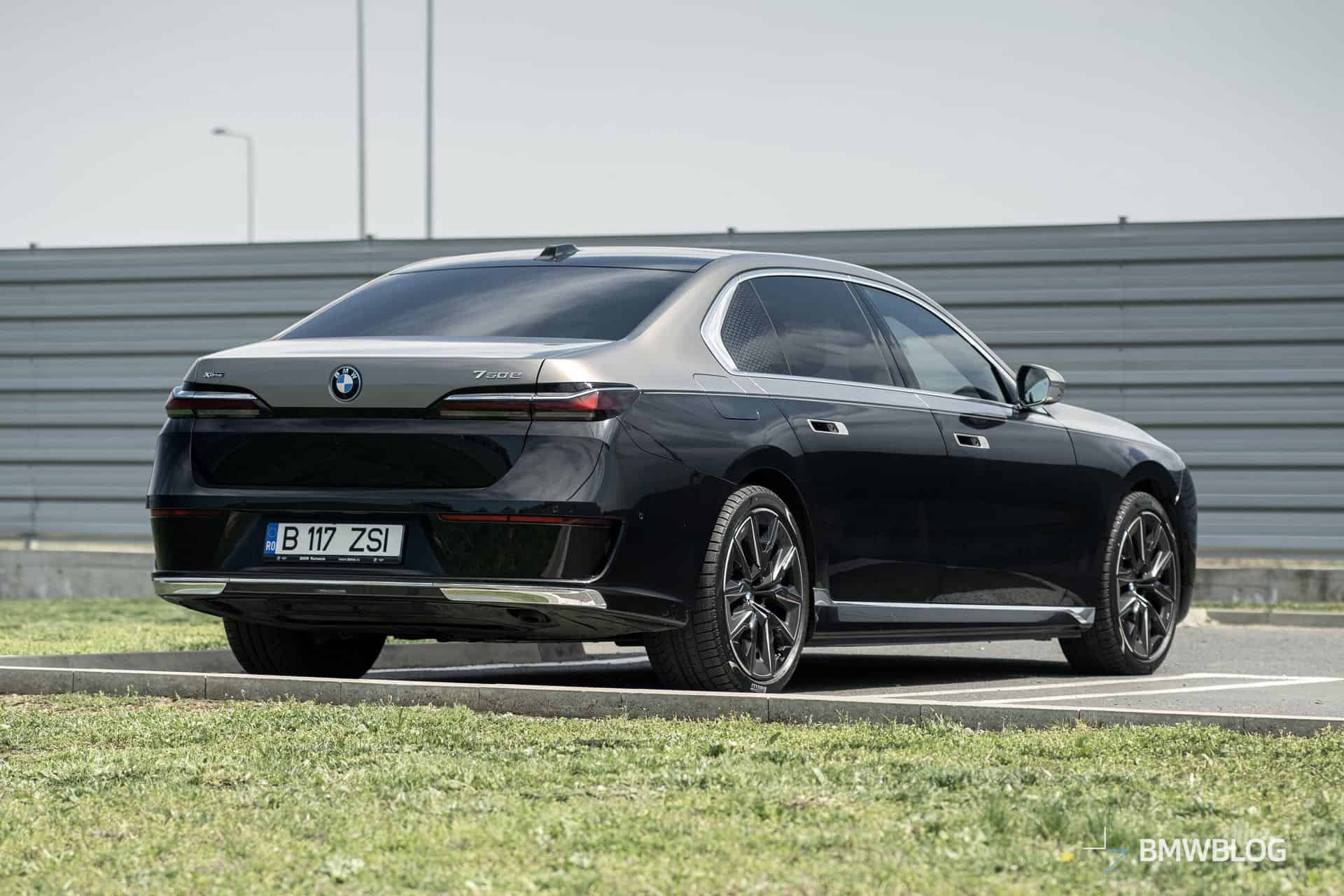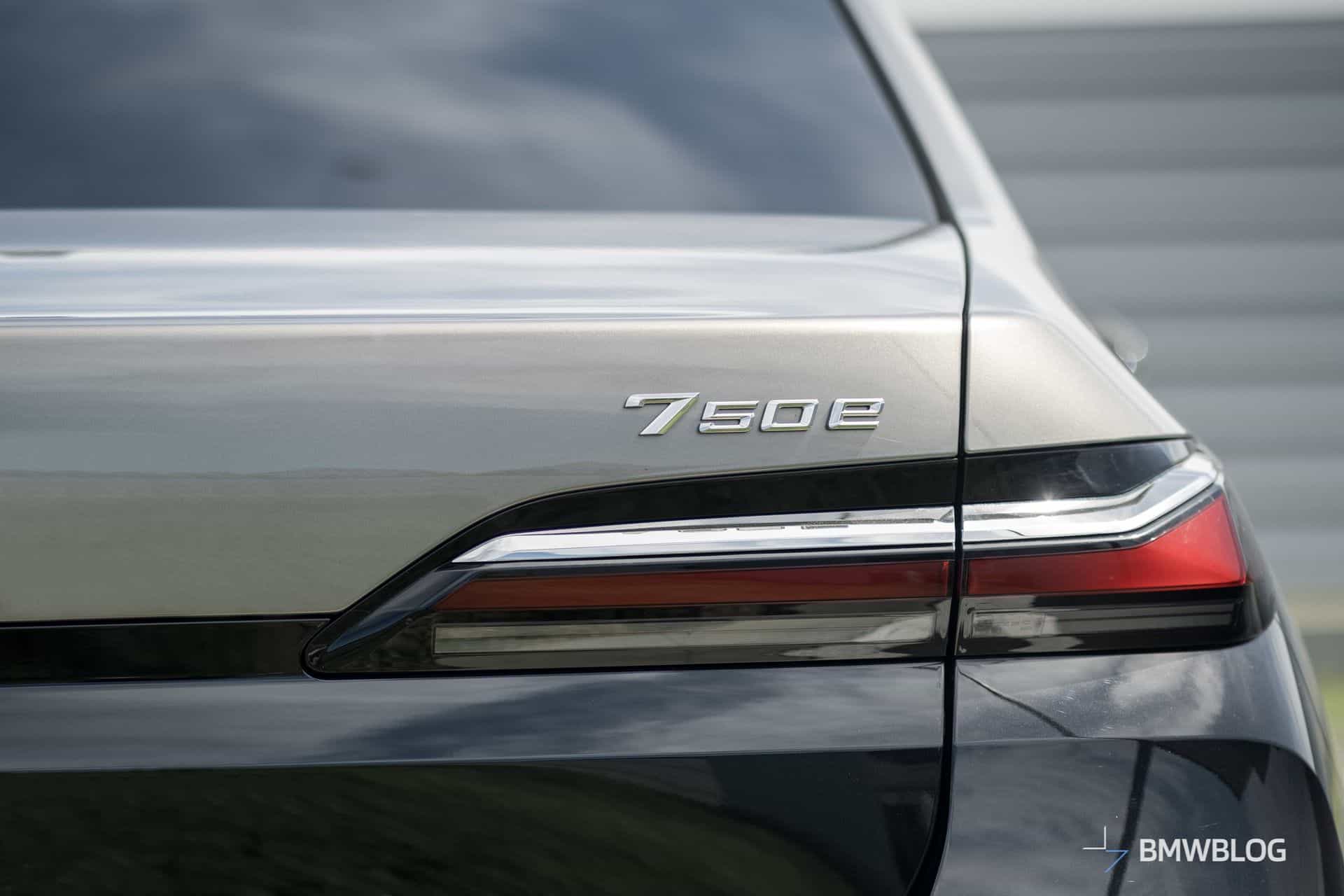BMW has given the latest 7 Series, the G70, a very bold and controversial face, and the car is also taller than any 7 Series that has gone before it because it needed to fit a big battery pack in its belly. It didn’t go down the same route as Mercedes to have a separate combustion and electric model, and this approach perhaps would have saved the 7 from looking as tall as it does—its presence is more Rolls-Royce than BMW, but that and the attention it gets may be more appealing to you than they are to me.
But while it looks a bit odd from many angles and is nowhere near as elegant as 7 Series greats of the past (like the low and sleek E38), it’s actually a phenomenal car. I’ve driven the last three generations of the 7 Series, and I found the G70 to be the most grown-up and luxurious of them all, but without losing the quintessential sporty feel you expect from a BMW. This isn’t my first contact with the latest 7 Series—I also drove an i7 xDrive60—but after spending a full week with a 2024 BMW 750e xDrive, it completely won me over. I still don’t like the way it looks, unless it’s a matte black M pack car, in which case I find it acceptable, but it’s such a nice thing to drive or be driven in that you soon forget that it has a polarizing exterior.
The plug-in hybrid powertrain in the 2024 BMW 750e was another highlight for me. It pairs the B58 straight-six with a punchy electric motor that together delivers very strong performance. The car can also drive only on electricity, and when it does, it has to be one of the most serene cars currently available. Even though you can still order the 760i with a V8 engine, if I were to order a G70 tomorrow, it would probably be the 750e.
Strange Exterior, Cozy Interior
We will never know what drove BMW to approve the current look of the G70 (it’s been said that this design was chosen to win over Chinese buyers), but I hope it becomes more traditional when the time comes for it to get its mid-lifecycle facelift. It wouldn’t be the first time BMW did this to a strange-looking 7 Series—the E65 was so poorly received with its droopy headlights and split rear lights that it got a major makeover for the LCI model, and the result was far more palatable.
2024 BMW 750e xDrive
Good
- Fantastic hybrid drivetrain, smooth and powerful
- High level of luxury inside the cabin
- Plush and luxurious drive
Bad
- Expensive
- Lack of physical buttons
- Low electric range
The split-headlight design of the G70 7 Series mimics the X7 and XM, and it draws a lot of attention. I’m not sure if they’re all admiring glances, but people will look as you glide past. The grille is still oversized, although it’s better integrated than in the case of the G11 LCI, but a closer look reveals that only about a third is open to let air through, and even that part has active shutters and stays closed if it’s cold outside.
The Expensive, But Cool Two-Tone Paint
My BMW 750e had the optional two-tone paint, with the bottom part finished in black and the upper part in a very fancy shade of metallic silver. It even had a pinstripe similar to what you might see on a Rolls-Royce, and it helped hide some of the height when viewing the car from the side. The optional 21-inch M wheels were black with some diamond-cut silver details, and they are the best visual choice for the 7 Series, although they do affect comfort a bit.
There’s nothing wrong with the design of the rear, but it is from the back that you can most easily notice just how tall the BMW 750e actually is. In terms of overall height, the G70 7 Series is about 8 centimeters (3.1 inches) taller than the outgoing G11, and since there are no creases or details anywhere around the body, it looks as tall as it is—BMW clearly didn’t try to hide the extra height as it could easily have implemented some design tricks to make the car appear visually lower—the phrase “slab-sided” comes to mind when looking at a BMW 750e.
High-Quality Materials
There is little to criticize about the interior, though. It lacks a bit of the wow factor that you may experience in a Mercedes-Benz with the 56-inch Hyperscreen, which is comprised of three different screens placed under a massive pane of glass, but it’s better in every single way, and it has its flamboyant touches.
My tester had the brown Tartufo Merino extended leather pack with perforated leather, which made the cabin feel opulent. The seats and some of the leather surfaces had excellent quilting, and the perforations in the leather created patterns that further enhanced the visual impact and opulence. The dark blue suede headlining perfectly complimented the brown leather, and it all came together to create a very cohesive look.
Sitting in the driver’s seat, you notice the crystal-like bar that runs almost the width of the dash. It has embedded mood lighting, which changes depending on the mode you’ve selected, and it all flashes red when you press the hazard warning button. Crystal details in BMWs are nothing new, but in the G70 and G60, BMW added this full-width bar that ties the crystal theme together, and it’s all very nice to look at.
Touching the bar, it’s pretty obvious it’s made of plastic, unlike some of the other crystal controls (the transmission selector, the swivel wheel for the infotainment, or the seat controls are all real crystal), but it looks as good as if it were actually made of the real stuff—having a big slab of crystal in the dashboard would probably not be a good idea for passenger safety.
iDrive 8.5 And Less Buttons
The two curved displays are nothing new, and we’ve seen them in other large BMWs—there’s nothing special about the screens used in the 7 Series. My tester had iDrive 8.5, and it brings notable improvements over the older version of the operating system, especially when it comes to the climate controls, which in version 8 were poorly designed and clunky to go through and use.
My tester had the base two-prong steering wheel, which was still pretty sporty with its flat-bottom design, thickness and large recesses for your thumps in the grip areas. It felt nice to hold on to, but it wasn’t anything particularly special; the fact that the paddles behind the wheels felt plasticky when you touched them didn’t help.
There’s nothing to complain about when it comes to the seats, though. My tester had the top-of-the-range seats, which feature the highest level of adjustability. They are absolutely fantastic, and their top layer of foam was very soft, which combined with the high-quality leather made them very pleasant to the touch. When you sit in any of the seats, you first sink in a little bit, like in some luxury cars of old—a very nice feeling.
Other notable interior features included the Executive Lounge seating and rear console in the rear, cooling, heating and a massage function for all four seats, and the 31-inch fold-down screen that is as unnecessary as it is spectacular. The optional automatic doors also deserve a shout-out, and they seem to be less temperamental than in the i7 that I drove last year—once you get used to pressing the brake pedal to close the driver’s door automatically, it will make most other cars you’ve ever been in feel ordinary.
Smooth Power and Silent Running
The combination of the silky-smooth B58 six-cylinder turbo engine and a powerful electric motor embedded into the excellent ZF eight-speed automatic transmission is excellent. This is a 50-badged BMW, and when you floor it, the acceleration you experience is almost identical to what you would expect from a larger V8 engine. When you put your foot down, you first feel the surge from the electric motor before the transmission kicks down and the engine’s turbo spools up, and the acceleration is impressive and relentless.
The electric motor makes 194 horsepower and 206 lb-ft (280 Nm), and even in electric-only mode, it still feels reasonably brisk, more than enough for leisurely driving around town. You can drive the 750e solely on electrons up to a speed of 86 mph (140 km/h), so you can go on highways without having to use up any fuel if you so choose.
Together, the combustion engine and the electric motor make 483 horsepower and 516 lb-ft (700 Nm) of torque, and they give the 5,412-pound (2.45-ton) 750e a claimed 0-60 mph time of 4.8 seconds. If you load it up with your left foot on the brake and fire it off the line, it feels even quicker than the figures suggest, and it easily accelerates all the way to its limited top speed of 155 mph (250 km/h).
The best part of this powertrain for me was its blend of smooth, refined running when the engine is on, and completely silent driving when it’s off. BMW gives an estimated electric-only EPA range of 34 miles (55 kilometers), which is achievable, especially in town. It’s also impressively efficient, given how powerful it is. I averaged about 22 mpg during my drive after I completely drained the battery.
If you charge the 750e regularly, you should see double that efficiency figure or even better, depending on how much charge it has and your driving style. It’s considerably better on fuel than the slightly more powerful 760i while offering almost identical performance (and more perceived torque thanks to the instant response of the electric motor).
Plug-In Features
One cool feature that BMW has implemented from its fully electric models is the adaptive brake energy recuperation system. It adjusts automatically depending on what’s in front of the car, so it coasts when there are no cars or obstacles up ahead, and as you approach something, it starts giving you progressively more regen. This frees you from having to constantly adjust the level of regen, and during my drive, it seemed to work quite well.
The only catch with the 2024 BMW 750e is that to take advantage of its efficiency and silent running, you need to charge it regularly. Its battery isn’t the biggest on the market—18.7 kWh usable, which is less than the rival Mercedes S580e and even the mechanically related X5 50e—and it lacks DC fast-charging capability, so it will draw no more than 7.4 kW from an AC charger. It will take over 8 hours to charge from a domestic socket, or 3 to 4 hours if you have a Level 2 AC charger.
Probably the Pinnacle of Plug-In Luxury
There is no denying how good a car the BMW 750e is, or how effective its plug-in powertrain is. It draws looks wherever you go it has lots of power and features borrowed from even more luxurious cars and just being aboard makes you feel special.
If you think the Mercedes S580e is too understated and you want something that packs more visual punch, then the 2024 BMW 750e xDrive might be the luxurious plug-in barge you’re looking for. It is expensive—my tester had a base price of €110,000 and jumped to nearly €180,000 with options, but if you can afford it, you won’t feel like you’re being short-changed, even if you keep adding the options until it passes the $200,000 mark.
2024 BMW 750e xDrive
Exterior Appeal - 7
Interior Quality - 9
Steering Feedback - 7
Performance - 7.5
Handling - 7.5
BMWness/Ultimate Driving Machine - 7
Price Point - 7
7.4
There is no denying how good a car the 2024 BMW 750e is, or how effective its plug-in powertrain is. It draws looks wherever you go it has lots of power and features borrowed from even more luxurious cars and just being aboard makes you feel special.


